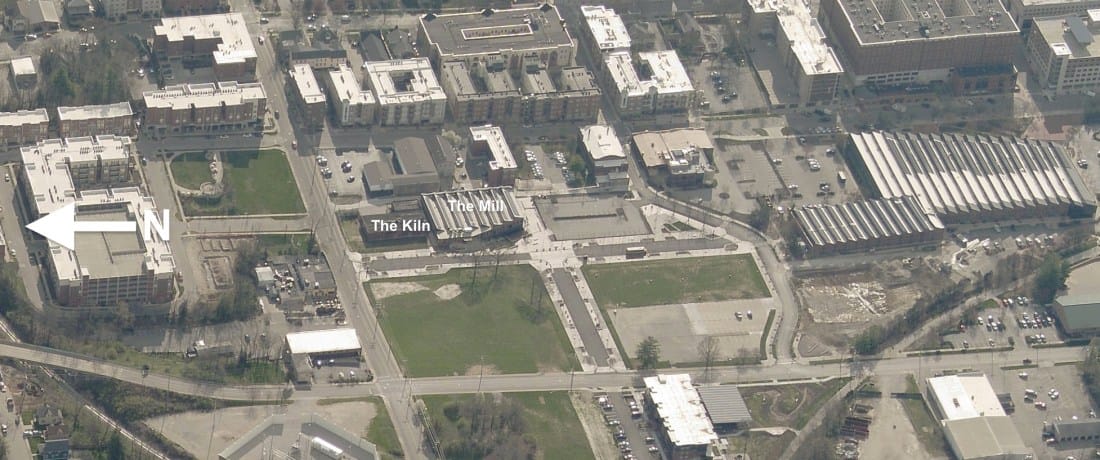Bloomington hopes to put $2M of local money into $10M “tech accelerator” if feds will make up the difference


Bloomington is applying to the federal government for an 80-20 matching grant that would pay for a $10 million “tech accelerator” to be constructed in the Trades District area of downtown Bloomington.
According to Jennifer Pearl, president of the Bloomington Economic Development Corporation, the tech accelerator would “make programming and services available to tech companies in our region, to help them grow and commercialize.”
The physical location in the Trades District would make it a “technology hub,” Pearl said.
Startups and mature tech companies alike would be candidates for using the tech accelerator’s services, Pearl said.
Bloomington’s 20 percent share of the project would be $2 million, drawn from revenue to the city’s consolidated TIF (tax increment finance) district. That’s why the proposal appeared on the Bloomington redevelopment commission’s Monday night agenda. The RDC administers the city’s TIF funds.
The RDC did not approve any expenditures of funds on Monday. They just gave a green light for the grant application to be made.
The proposal was presented to the RDC by Pearl and Alex Crowley, who’s director of the city’s economic and sustainable development department.
The BEDC will be the lead applicant for the grant, which would come from the U.S. Economic Development Administration (EDA), funded through the CARES Act.
Crowley said a completed application would be released probably sometime late September or early October. There’s no hard deadline for a grant to be submitted, Crowley said. But Crowley has been told by the EDA that the sooner you get the application in, the better. The amount of CARES Act funding from the EDA is finite, Crowley said.
Within the Trades District, Crowley said there are two potential locations for a tech accelerator. One is the southeast corner of the district, at the the corner of Madison and 10th Streets. Crowley described it as a big open lot, across the street from the Solution Tree parking lot. The other possibility mentioned by Crowley is the northeast corner of the district.
Pearl said the idea of the tech accelerator is to foster the growth of the next employment base, in the cluster of companies that’s best positioned for creating good-paying jobs. They’re jobs that not only help the city of Bloomington and people here, but people across the community, Pearl said.
Pearl said the choice to focus on technology companies, as opposed to something else, is that tech applies across almost every other sector. Technology applies to manufacturing as well as life sciences, she said. Technology companies also require less infrastructure and resources compared to other sectors, Pearl said.
The tech accelerator would also tap public sources of tech development, like Indiana University, Pearl said, pointing to artificial intelligence, machine learning and quantum computing work done there.
Pearl also pointed to Crane Naval Surface Warfare Center which is just to the south. There are intersections between tech and defense, Pearl said.
Pearl said the tech accelerator would provide the kind of support start-up companies need. In her remarks, Pearl described a company that had “graduated” from The Mill as the kind of company that could be served by the tech accelerator.
That drew a question from RDC member Eric Sandweiss, who wanted to know how the new tech accelerator’s function would be different from that of The Kiln. That’s the adjoining historic building to The Mill, which the RDC agreed to sell to a local group. The Kiln got approval from the city plan commission at its April meeting, but there is no external signs of work on the building yet.
Sandweiss said the purpose of the tech accelerator sounded similar to the explanation of purpose for the The Kiln project—that it would give support to startup companies that outgrow The Mill.
Crowley responded to the Kiln question by talking about a difference of scale: “Think of this as The Kiln on steroids,” Crowley said.
The tech accelerator, will have a suite of organized operational support designed into it, Crowley said—it’s not just going to be a building. There will be “services that wrap around,” Crowley said, along with “access to capital.” Those are elements that make this kind of facility successful, Crowley said.
A nonprofit will be established to run the tech center, Crowley said.




Comments ()